I’d spent very little time in Germany, before this year.
One 48-hour trip to Berlin as a student was about all I knew.
I attended an international University, and a good cohort of my fellow alumni are German. So it’s no surprise that some of them have congregated around Freiburg, on the edge of the Black Forest. Opened food businesses, had babies…
I visited for the first time back in May, and again this past week for a wedding and time away from Bristol.
I intended this article as something of a travel piece. Recommendations for where to eat, and how best to experience the region. A lot of the places I’m about to describe, however, aren’t open to the public. So, consider this a culinary listicle of foods you might like the sound of, rather than anything actually useful.
Freiburg, a university town of approximately 230,000 people is settled in the foothills of the Black Forest. Known for its temperate climate and proximity to France and Switzerland, it is possibly the least German of all the German regions.
Half an hour in the car, and you can be in Alsace drinking wine, or Zürich for Christmas shopping. It is a pan-European region, where citizens slip easily across borders (imagine!) and benefit from the proximity of their neighbours.


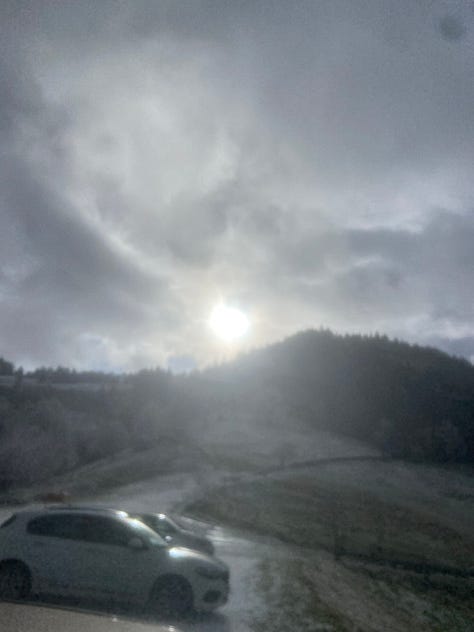
The traditional cuisine is not the most gastronomically advanced. Schnitzel (breaded pork or veal cutlets) is served mostly with spätzle (boiled squiggles of pasta-esq wheat dough) and covered in gravy. Flagons of beer accompany as standard. Vegetables feature occasionally, mostly as a culinary afterthought.
It’s the kind of hearty, carb-laden cuisine that gets people through mountain winters. The day of my friends’ wedding, we drive into the hills, seeking snow and sustenance. We find a tiny wooden house, where busty women in lederhosen serve a menu limited to schnitzel, schnitzel with spätzle, or spätzle with kass (cheese.) The space was heated by beautiful, traditional green tiled ovens. We share two schnitzels between four and leave sufficiently fortified to face the incoming evening of celebrations.
There is plenty of wine production in the region, albeit historically a bit rough and ready. The classical varietals are Spätburgunder (Pinot noir), Weißburgunder (a descendent of Pinot gris), along with a handful of Muscats, Pinot blanc and the odd bit of Chardonnay. Gutedel (Chasselas) is the indigenous variety, but historically it was used to produce plonk, and has generally been in decline, although my friend tells me it’s making a bit of a comeback.
The wine culture here is rapidly changing. I would comfortably add the region to my ‘one to watch’ list. Innovative young producers are finding homes thanks to easier access to land, cheaper start-up costs, but a similar climate to their French neighbours.
One such winery is Wasenhaus. A ‘pinot-focused’ winery, ‘producing artisanal, handcrafted wines in a noninterventional lowtec way.’


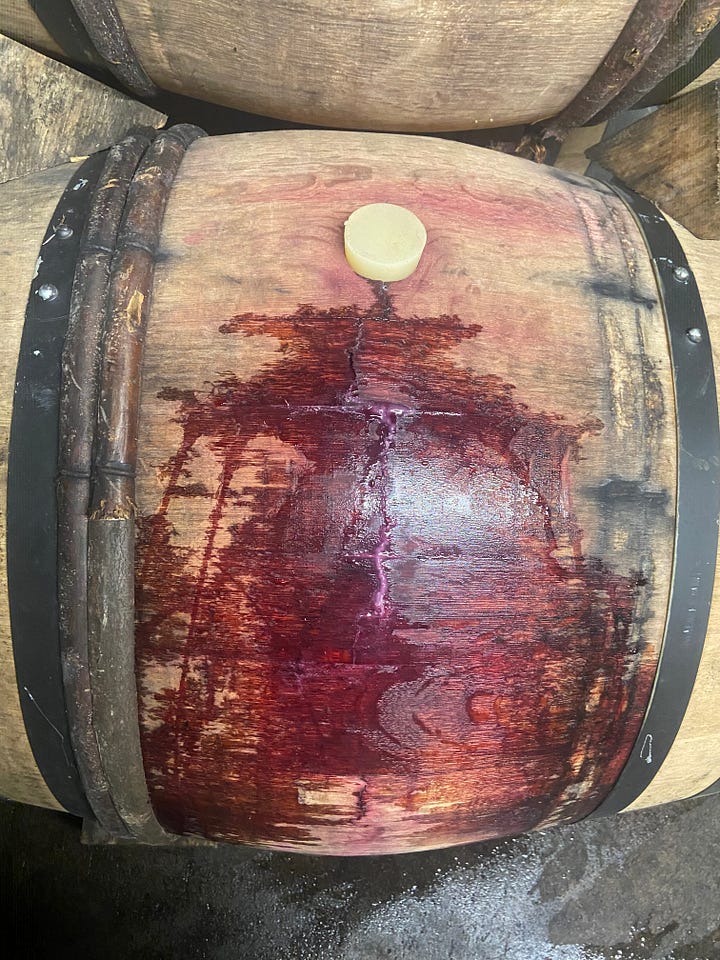
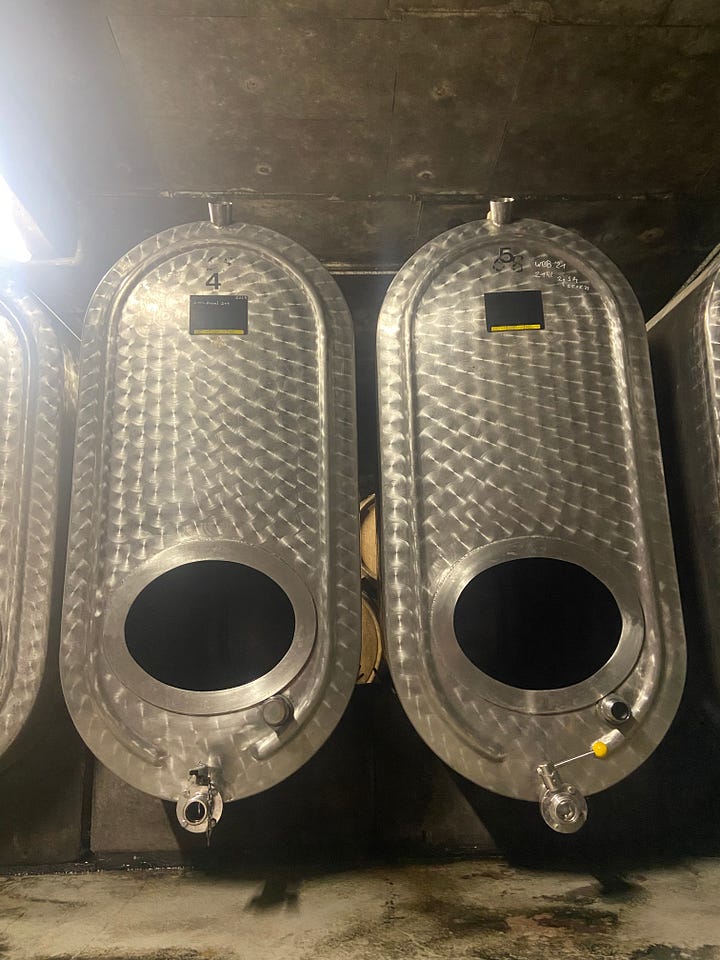
Producing since 2016, Wasenhaus is the perfect example of youth and innovation in traditional wine-making regions. Christoph Wobler and Alex Götze met working at some of the top biodynamic producers in Burgundy. With the cost of land wildly prohibitive, they returned to Wobler’s childhood region of Baden to try their hand at production. Without access to a cellar or equipment, they looked for a space to rent and found an empty winery, which has existed here since 1885.
The buildings were originally part of an old church. When the winemaking family left, lots of ‘stinky old barrels’ were also left behind. Nobody had worked the site for more than ten years when Wobler convinced the owner’s son to rent it to them.
‘Sometimes the old winemaker passes by,’ he tells us. ‘Just to take a look…’
They started with one room, rented for a hundred euro and mostly full of furniture and old motorbikes. They utilised equipment found around the place, and repurposed barrels from Burgundy, although most of their production is in steel.
All the red is Pinot noir, with the remaining production made up of Chardonnay, Pinot blanc and little bit of Chasselas. Natural wine is new to Baden. Traditionally the wine culture here has been, ‘cheap three-euro whites. Quickly made and good with asparagus. Nothing fancy.’
They produce 30,000 bottles a year, and 2022 saw them double production. You know it’s good, because the website is a single holding page collecting contact details only. You join a list, and the annual release is snapped up almost instantly, a lá tickets to Glastonbury.
I ask how they established such a reputation so quickly, and Wobler tells me that they were ‘extremely lucky’ to be in the right place at the right time. ‘We found a French distributor. They hosted a wine-tasting at a restaurant, and the sommelier just loved the product. They were incredibly enthusiastic about it, and it went from there.’
As we get ready to leave, my friend leans over and whispers, ‘The sommelier he’s talking about came from Septime.’ He flashes me a smile. ‘Once they loved it, everybody else followed.’
I think, once again, about how network is everything. But it would be unfair to attribute their success solely to network, given the outstanding quality of the product. It really is exceptional wine, and the passion and enthusiasm of Wobler can’t help but rub off. We leave armed with bottles of the 2020 Vulkan and savour every last drop over dinner.
Wasenhaus is listed under UK importer, Newcomer Wines. I’d tell you to go buy it, but you probably can’t.
Ringlehöf - goats cheese
The Sunday of our visit, we are feeling a little worse for wear. So, it’s with some trepidation that we pile back into our cars, and head for the hills.
We need not fear, Ringlehöf turns out to be the perfect spot to while away a hangover.

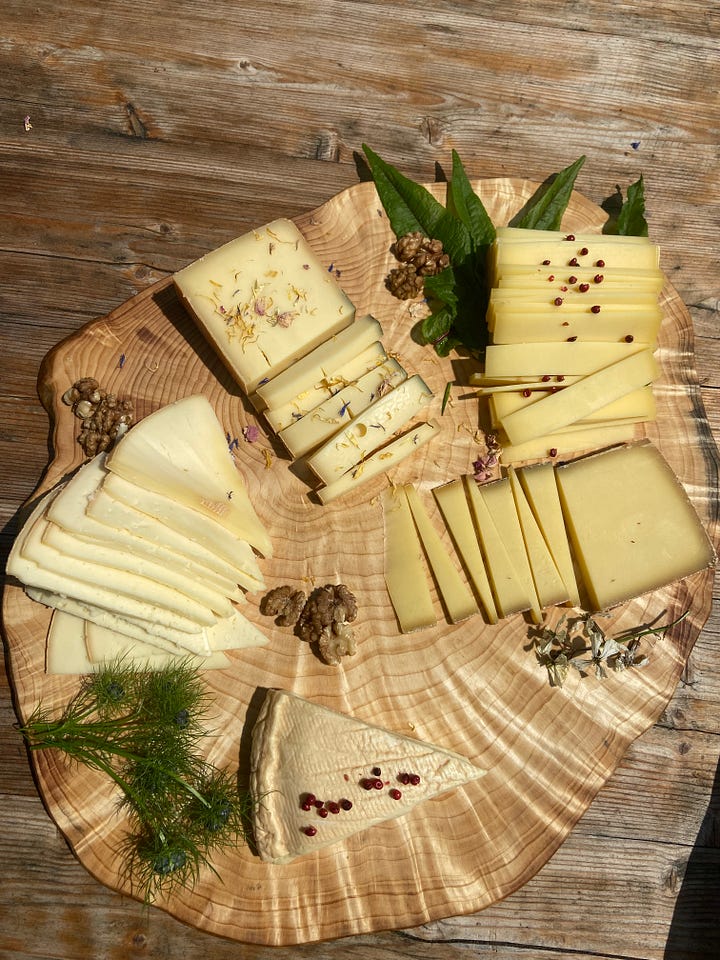
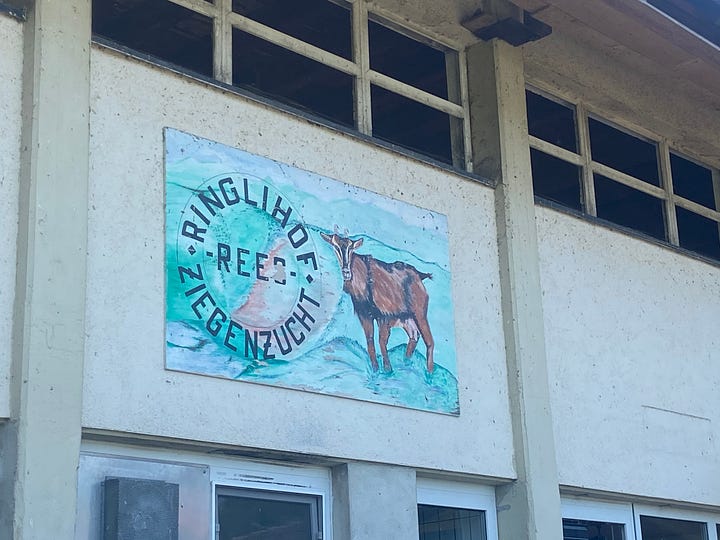

We are greeted on arrival by a ginger giant of a man. We tour the farm and hear how they used to farm cows, but switched to goats when the bottom dropped out of the milk market in the 90s. In 1995, they built a cheese-making facility, developed the brand and starting selling at local farmers markets. They’ve since grown to a 200-head herd of beautiful big eyed ladies.
We learn that it’s quite unusual in this region for farming to be a full-time enterprise. Two hundred goats are considered pretty intensive around here. The high, steep hills make it perfect for animals, but impossible for a tractor. Grass must be cut, and hay siloed by hand. This is labour intensive uplands agriculture. He says that it’s normal for farmers to have only four or five cows. I ponder the economics of English farming, and just how impossible it is to farm at a micro-scale. We spend the afternoon nibbling cheese and refreshing ourselves in the freshwater pond.
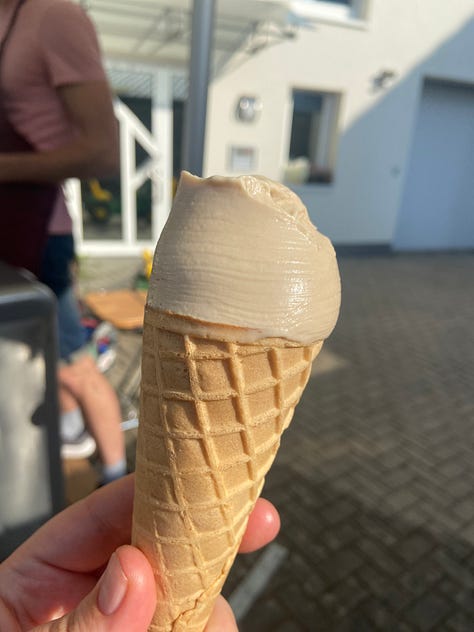
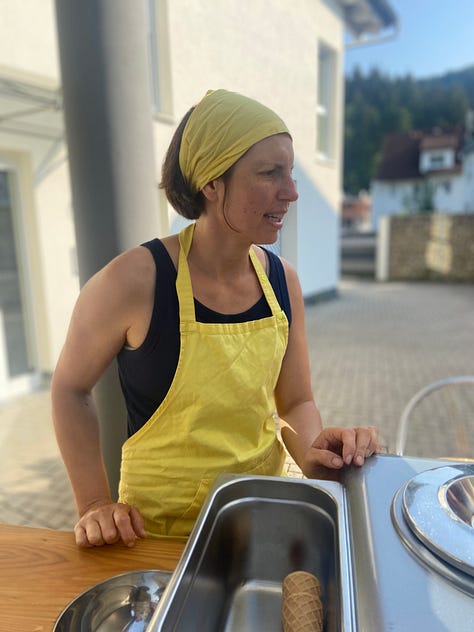

Bolleschlotzer ice cream is the organic ice-cream company run by the same friends whose wedding I was here to attend.
In English, the name translates to ball-licker, but I am told (in the most serious of ways) that it does not have the same meaning in Germany, as here.
Caroline and Frank Corsten have been developing their gelato-style offering since 2016. We sat down for a chat about the business of food, organic standards, bees, life and love.
Become a paid subscriber to have a listen.
For technical reasons the audio follows in a second post.




